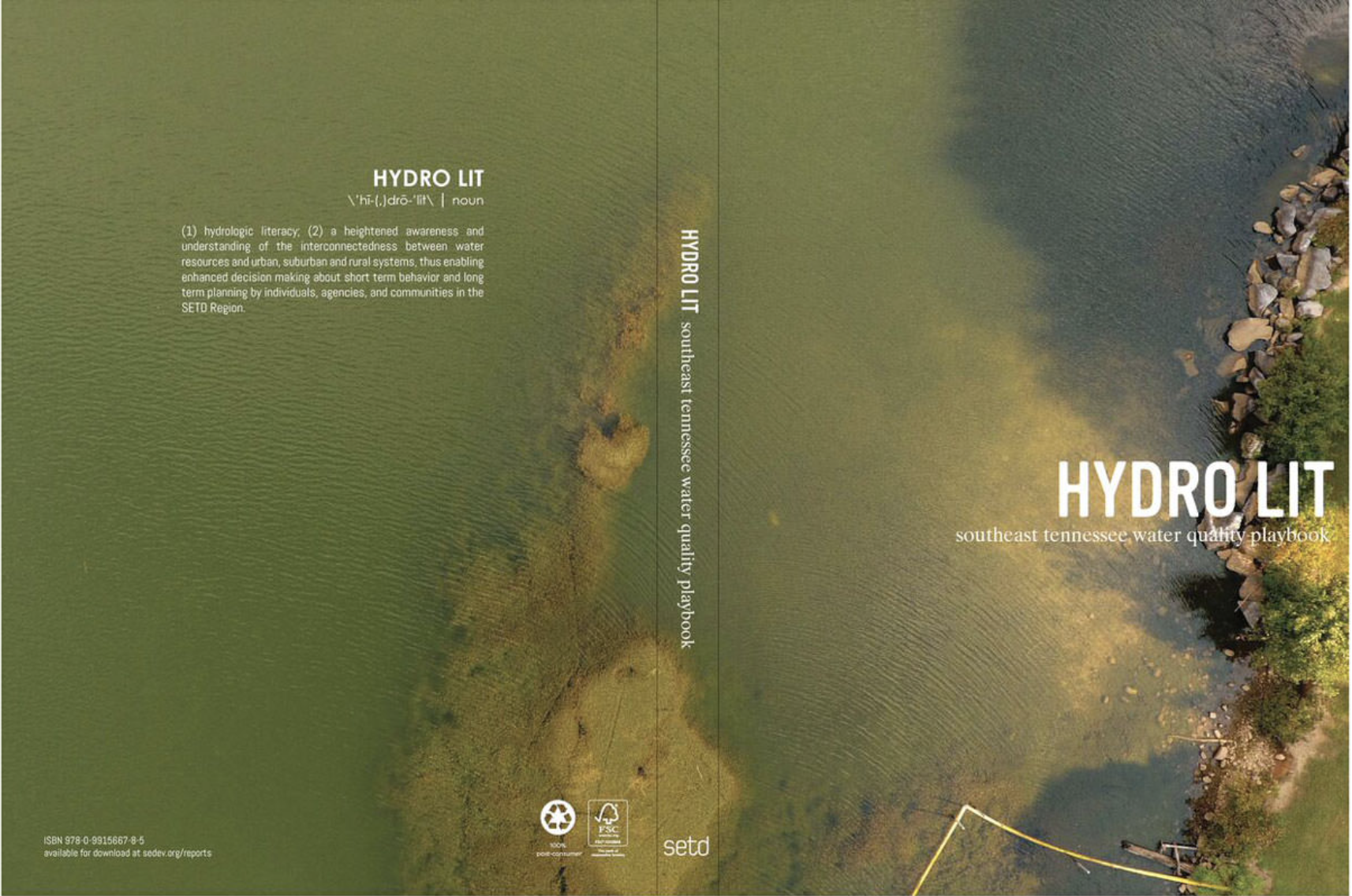Green Building Resources for Landscape Architects
“Stormwater may well be the most pressing sustainability challenge confronting Chattanooga today. Every year we send over one hundred million gallons of untreated sewage and stormwater into our local waterways.”
HYDROLIT
HydroLIT is a manual produced for the Southeast Tennessee Development District by the University of Tennessee’s Landscape Architecture program that proposes innovative strategies for improved water quality in the southeast Tennessee region. These strategies acknowledge the ability of watershed boundaries to offer a framework for merging visions of urban development and ecological health. They coalesce the roles of economic prosperity and natural resource health in shaping urban life as well as the relationship between designed interventions and their surrounding biophysical flows. These proposals function at multiple scales and offer tactical interventions as economical first steps for local communities to begin implementation. HydroLIT is a pioneering toolkit that aims to empower citizens and policymakers with knowledge of water quality stewardship that can affect change across the region.
https://www.asla.org/2017studentawards/332631.html
Resource Rain
Resource Rain is the go-to source for information about the current City of Chattanooga regulations that help address both the quality of our water, and the quality of life in our city. Resource Rain and the strategies it outlines for green infrastructure and low-impact development not only helps meet our moral obligations to our environment and legal obligations under the Clean Water Act, it also helps improve the quality of life in our city by creating attractive landscaped elements to balance hard impervious surfaces. It makes sidewalks more enjoyable to walk on, streets more beautiful, and turns seas of asphalt parking into potential habitats.
For Resource Rain, please see the city's website: http://www.chattanooga.gov/public-works/44-public-works/989-resource-rain
For our Low-Impact Design Challenge which helped launch Resource Rain, and to see the presentations from the teams that competed, head to this page.
case studies
The Landscape Architecture Foundation has great case studies on creating high quality environments for people and stormwater. One of these case studies is in Chattanooga:


